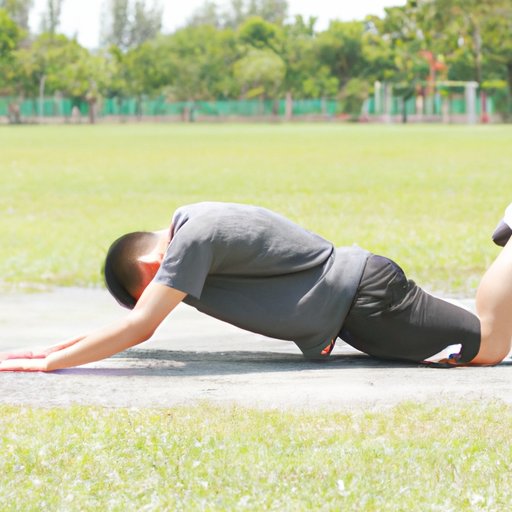
Introduction
Many of us have heard that we shouldn’t exercise immediately after eating, but have you ever wondered why? Digestion and physical activities are two important processes our body performs, and it’s crucial to know how and when they can coexist. In this article, we’ll separate the science from the myths and answer the age-old question: How long should you wait to exercise after eating?
The Science Behind Waiting to Exercise After Eating
After a meal, our body focuses on digestion, and our blood sugar and insulin levels fluctuate to absorb the nutrients we consumed. Exercising while digestion is in process can divert blood flow from the digestive tract, leading to discomfort and indigestion. In contrast, waiting for a certain amount of time after eating allows our body to manage the food efficiently and prepares us physically and mentally for the exercise.
A study published in the International Journal of Sports Nutrition and Exercise Metabolism indicates that waiting 30-60 minutes after eating before exercising provides the optimal time window for digestion and performance. According to Rebecca Weible, the founder of Yo Yoga! studio in New York City, “It allows your body to start breaking down the food and accessing the nutrients it needs for exercise.”
5 Easy Exercises to Do After a Meal
Now that you know the benefits of waiting, it’s essential to discuss the exercises you can do after eating. Engaging in light movements after a meal can stimulate digestion and help you feel more energized. Here are some examples:
- Walking: Taking a brisk walk for 10-15 minutes can help with blood circulation and digestion. Wait 30 minutes after eating before starting.
- Yoga: Gentle yoga stretches can aid digestion and help release stress. Wait 30-60 minutes after eating before practicing.
- Bodyweight exercises: Performing low-impact moves such as squats, lunges, or push-ups can help you get your metabolism going. Wait 45-60 minutes after eating before starting.
- Swimming: Swimming is a great low-impact exercise that can help you relax and aid digestion. Wait 45-60 minutes after eating before hitting the water.
- Stretching: Doing easy stretches can help you ease in after a meal and prepare you for a more intense workout later. Stretching can be done immediately after eating.
Please note that these exercises are light and functional enough to stimulate digestion and give you a boost of energy. If you’re planning on a more challenging workout, it’s recommended to wait at least an hour after eating a light meal and up to three hours after consuming a larger meal.
The Myth of Waiting to Exercise After Eating
While many benefits come from waiting to exercise after eating, there are some downsides. For instance, waiting too long can lead to sluggishness and make it more challenging to muster the energy to exercise. Personal trainer and nutrition coach Alyssa Ages notes that “Fast-acting carbohydrates don’t cause the post-meal plunge in energy that can lead to sluggishness during a workout. If you’re fueling up with a fast-acting carb like a banana or rice cake, it’s perfectly fine to work out right away.”
The concept of “fasted cardio” has also gained popularity, referring to the practice of exercising on an empty stomach. Proponents of fasted cardio suggest that it can increase fat burn and improve insulin sensitivity. However, a study published in the Journal of Science and Medicine in Sport indicates that exercising before breakfast doesn’t provide any additional benefits compared to exercising after eating.
Personal Essay on Exercising After Eating
As someone who has experimented with different approaches to exercising after eating, I can say with confidence that it’s all about finding what works best for your body. I’ve had times when I felt terrible disconnecting my digestion to exercise, and other times when I used food as a source of fuel to boost my performance. Here are my tips to help you find your balance:
- Keep a journal: Write down what you ate, how long you waited, and how you felt during and after your workout. See if there’s a pattern that works best for you.
- Be mindful of the meal: If you’ve had a large, heavy meal, wait at least an hour before doing anything too strenuous to avoid indigestion.
- Listen to your body: Pay attention to how you feel before and after eating and exercising. If you feel unwell or weak, it’s better to rest or opt for a lighter workout.
Q&A with a Nutritionist or Personal Trainer
To provide expert advice, we talked to Sarah Adler, a certified nutritionist, and personal trainer. Here are some common questions and her responses:
Q: When is the best time to eat before exercising?
A: Ideally, 2-3 hours before your workout. It gives adequate time for digestion, avoids blood sugar crashes and ensures an optimal source of fuel for your body.
Q: What type of food should you eat before exercising?
A: A combination of complex carbohydrates and proteins are great choices. Whole wheat bread with almond butter, oatmeal with berries and Greek yogurt, or apple slices with peanut butter are all excellent choices. Pre-workout snacks should be low in fiber and fat to avoid indigestion.
Q: Do you have to wait after eating before exercising?
A: Waiting 30-60 minutes can provide optimal digestion and performance. However, if you’re short on time or choose the right type of pre-workout snack, you can skip waiting altogether.
Conclusion
Exercising after eating is a practice that requires understanding and personalization. Waiting a reasonable amount of time after a meal can aid digestion and help you perform better physically and mentally. However, it doesn’t have to be a hard-and-fast rule. By experimenting with different approaches and listening to your body, you can find the sweet spot that works best for you.





